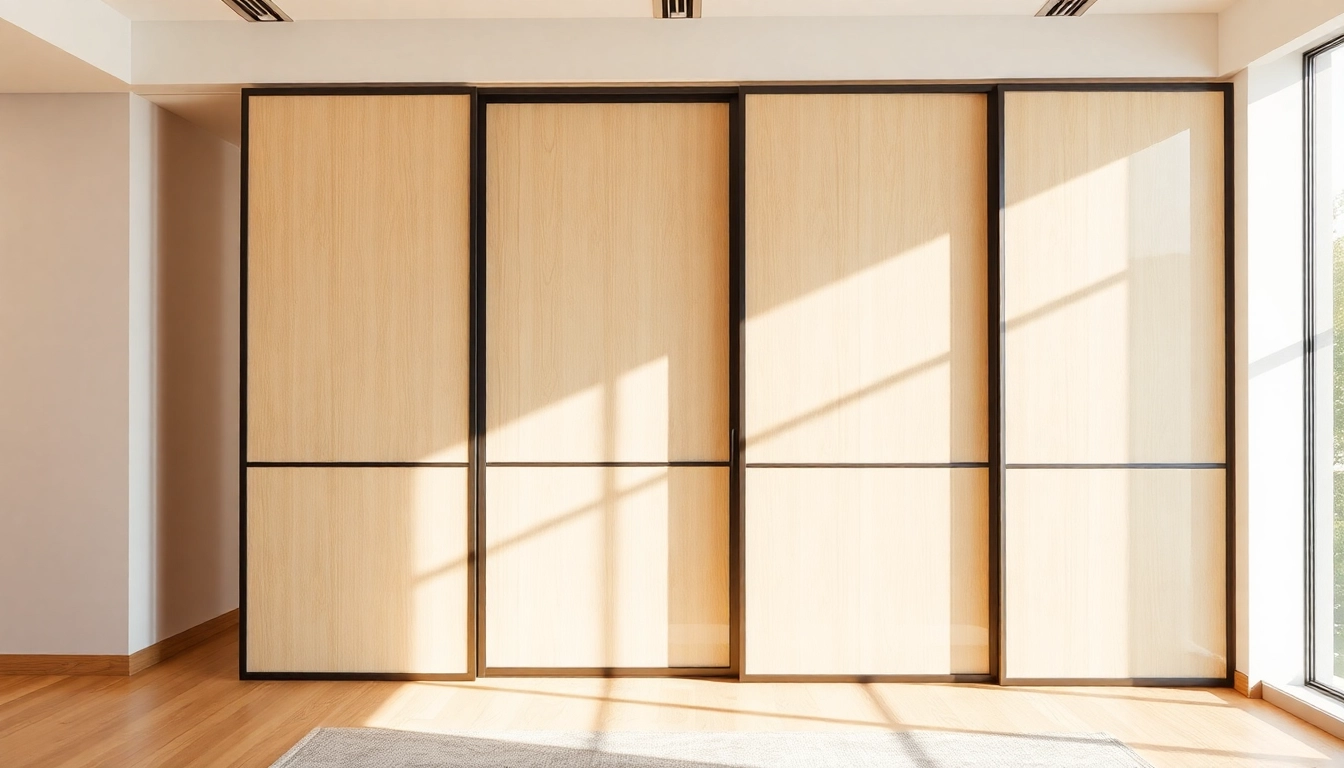
Understanding Sliding Partition Walls
What is a Sliding Partition Wall?
A sliding partition wall is an innovative architectural solution designed to create flexible and dynamic spaces within homes and commercial environments. These walls operate on a rail system, allowing them to seamlessly slide open or closed, effectively dividing or unifying spaces as needed. This adaptability is crucial, especially in settings where optimal space utilization and multifunctional areas are paramount.
Benefits of Using Sliding Partition Walls
Sliding partition walls offer numerous advantages that enhance both aesthetics and functionality:
- Space Efficiency: They allow for the use of large areas without crowding, providing the ability to create smaller, private spaces when required.
- Versatility: These walls can be leveraged in various settings, from residential spaces to corporate offices, enabling businesses to reconfigure spaces according to their evolving needs.
- Cost-Effective: Compared to traditional construction methods, installing a sliding partition wall can be significantly less expensive and less time-consuming.
- Design Flexibility: Available in numerous materials, colors, and finishes, sliding partition walls can be tailored to match any decor style.
- Improved Acoustics: Many models come with sound-damping features, making them ideal for environments where noise control is essential.
Types of Sliding Partition Walls
Sliding partition walls can be categorized into several types, each designed for specific applications:
- Fixed Track Systems: These systems utilize a top-mounted track, allowing the panels to slide smoothly and providing a cleaner look without floor tracks.
- Floor-to-Ceiling Designs: Ideal for maximizing privacy, these designs reach from the floor to the ceiling, offering solid soundproofing benefits.
- Folding Partition Walls: These walls fold to one side when opened, providing width flexibility for larger spaces.
- Glass Sliding Walls: These modern options allow for the benefits of natural light while still providing partitioning capabilities and aesthetic appeal.
Design Considerations for Sliding Partition Walls
Choosing the Right Materials
The choice of materials is crucial when considering sliding partition walls:
- Wood: A traditional yet versatile option that adds warmth.
- Metal: Offers durability and modern aesthetics, often used in commercial applications.
- Glass: Perfect for creating an open feel while providing necessary separation, particularly in office spaces.
Color and Finish Options
When selecting colors and finishes, aim for cohesion with existing decor while also considering functionality:
- Neutral Tones: Work well in virtually any setting and allow for versatility in styling.
- Bolder Colors: Can serve as a statement piece in rooms designed for relaxation or creativity.
- Custom Finishes: Such as wood grains or metallic surfaces that enhance overall aesthetics.
Integrating Lighting and Accessories
To enhance the functionality and aesthetic of sliding partition walls, consider integrating various lighting elements:
- Ambient Lighting: Soft lighting can define spaces without overwhelming.
- Task Lighting: Especially important in areas that require focused work, such as office spaces.
- Decorative Elements: Such as artwork or shelving units that can complement the sliding wall structure.
Installation Guide for Sliding Partition Walls
Preparation and Planning Steps
Before installation, careful planning is essential. Here’s a structured approach:
- Measure the area where the sliding partition wall will be installed to ensure a perfect fit.
- Choose the type and material based on aesthetic preferences and functionality needs.
- Gather all necessary tools and materials ahead of time.
Tools and Materials Needed
Common materials and tools for installation include:
- Sliding panels
- Rail or track system
- Mounting hardware
- Drill and drill bits
- Level
- Measuring tape
- Screwdriver
Step-by-Step Installation Process
Follow these detailed steps to install your sliding partition wall:
- Mark the placement of the track on the wall, ensuring it is level.
- Drill holes and secure the track to the wall with the appropriate anchors.
- Attach the sliding panels to the track, making sure they move freely.
- Make any necessary adjustments to ensure proper alignment and functionality.
Maintenance Tips for Sliding Partition Walls
Regular Cleaning Best Practices
Maintaining a sliding partition wall requires some care to keep it looking and functioning well:
- Dust panels regularly to prevent accumulation.
- Use a soft cloth and a mild cleaner to wipe surfaces.
- Ensure tracks are free from debris to facilitate smooth sliding.
Common Issues and How to Fix Them
Some issues may arise with sliding partition walls. Here’s how to address them:
- Panels Sticking: Check for debris in the track; cleaning is often all that’s needed.
- Misalignment: Adjustment of panel hangers may be required to realign them if they aren’t sliding as expected.
When to Seek Professional Help
If you encounter persistent issues or lack the time for maintenance, consider consulting with a professional to ensure proper care of your sliding partition wall.
Innovative Uses of Sliding Partition Walls
Creating Multi-Functional Spaces
Sliding partition walls can transform a single-use room into a versatile area. For instance, a large living room can be divided into a home office and lounge area, enabling work-life balance without the need for extensive remodeling.
Sliding Partition Walls in Commercial Environments
In offices, these walls allow for agile workspaces that can adapt to team needs, ensuring that companies can effectively use resources and respond to change, from collaborative areas to private offices. Their reconfigurable nature supports evolving business strategies and employee engagement.
Designing with Sustainability in Mind
Choosing eco-friendly materials for sliding partition walls, such as sustainably sourced wood or recycled materials, contributes to a more sustainable built environment. Moreover, the energy efficiency of glass panels allows natural light to permeate without compromising privacy, supporting green building practices.